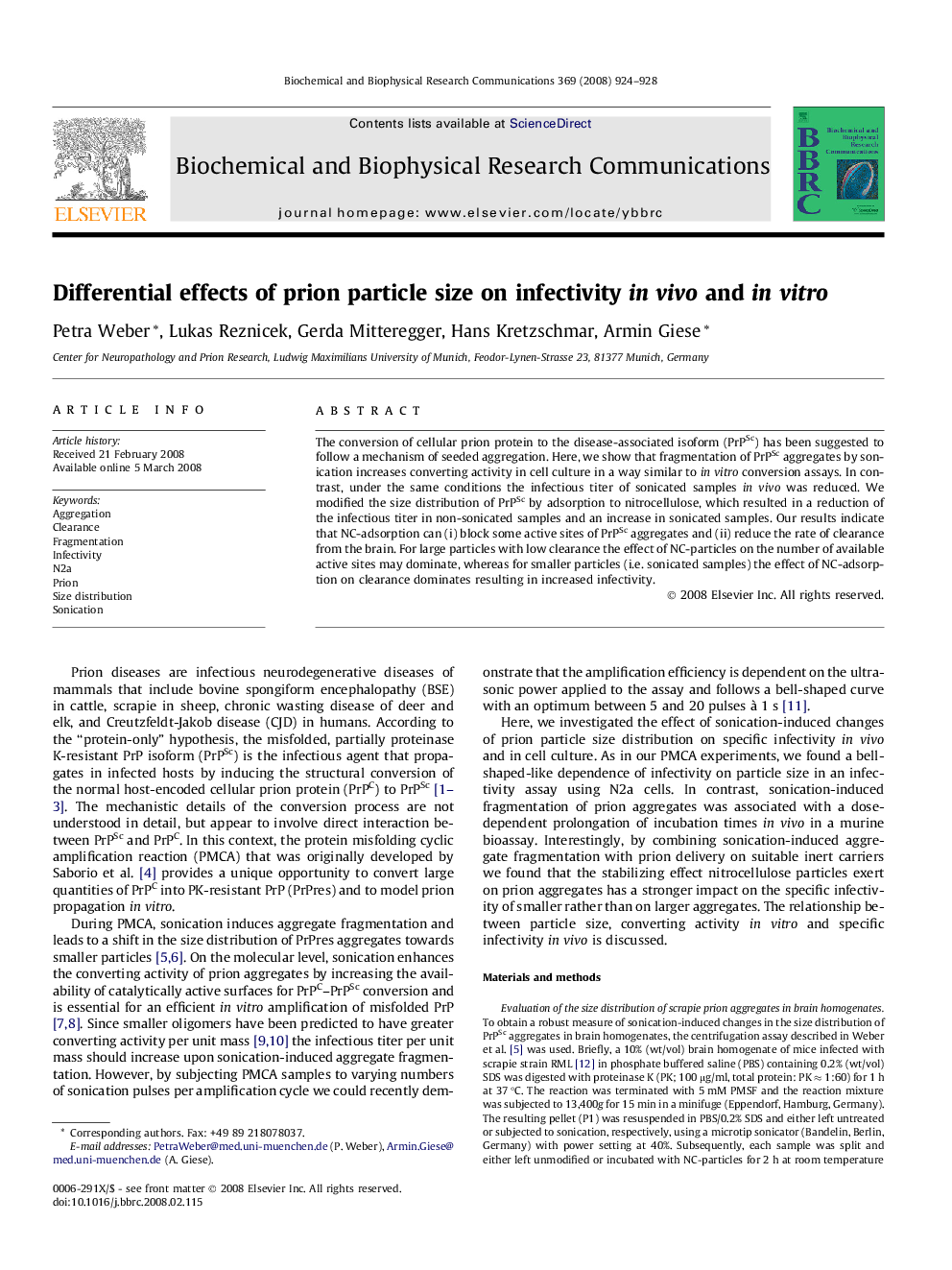| Article ID | Journal | Published Year | Pages | File Type |
|---|---|---|---|---|
| 1935998 | Biochemical and Biophysical Research Communications | 2008 | 5 Pages |
The conversion of cellular prion protein to the disease-associated isoform (PrPSc) has been suggested to follow a mechanism of seeded aggregation. Here, we show that fragmentation of PrPSc aggregates by sonication increases converting activity in cell culture in a way similar to in vitro conversion assays. In contrast, under the same conditions the infectious titer of sonicated samples in vivo was reduced. We modified the size distribution of PrPSc by adsorption to nitrocellulose, which resulted in a reduction of the infectious titer in non-sonicated samples and an increase in sonicated samples. Our results indicate that NC-adsorption can (i) block some active sites of PrPSc aggregates and (ii) reduce the rate of clearance from the brain. For large particles with low clearance the effect of NC-particles on the number of available active sites may dominate, whereas for smaller particles (i.e. sonicated samples) the effect of NC-adsorption on clearance dominates resulting in increased infectivity.
